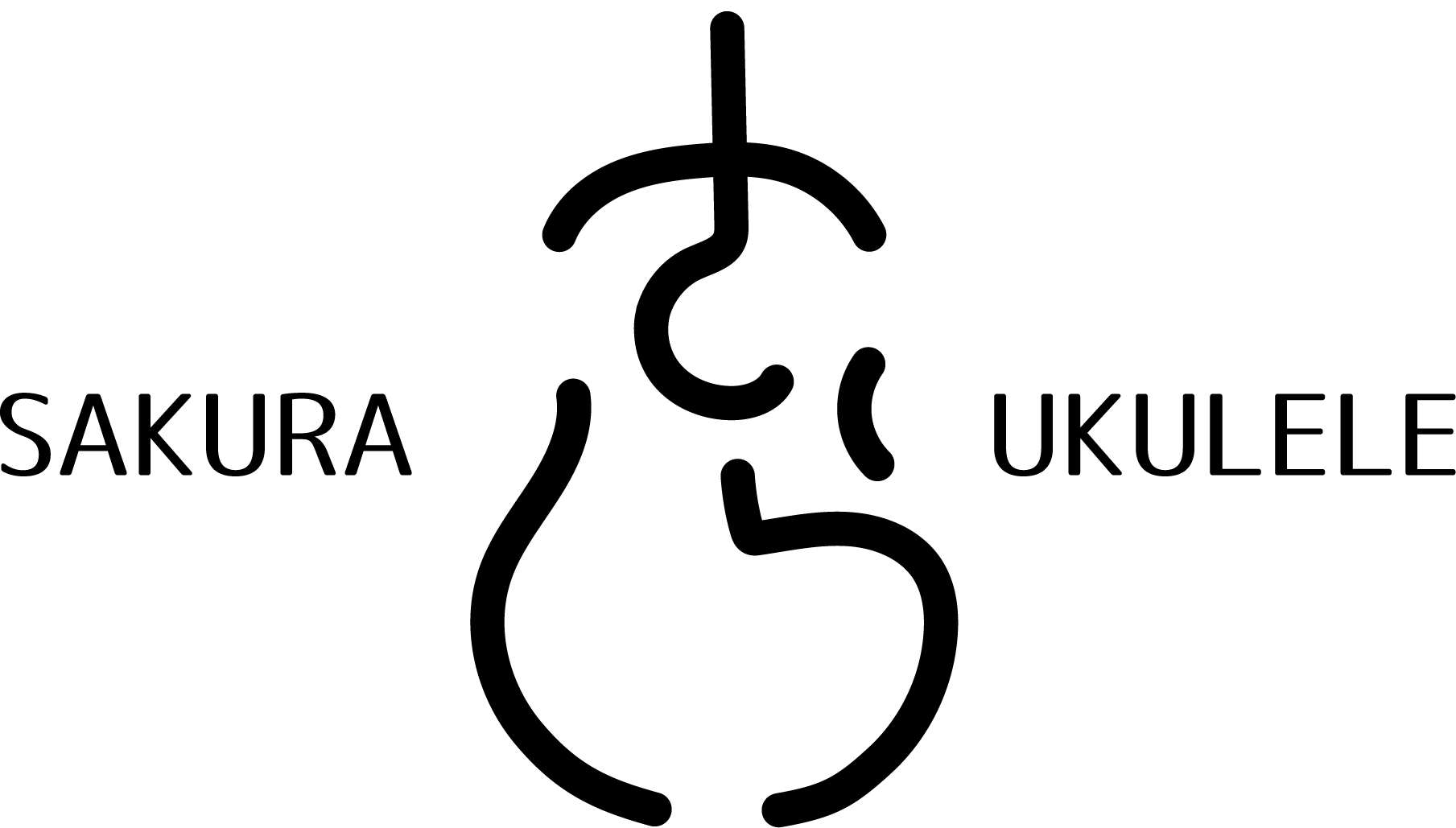Setup Process – Bacchus Global Series
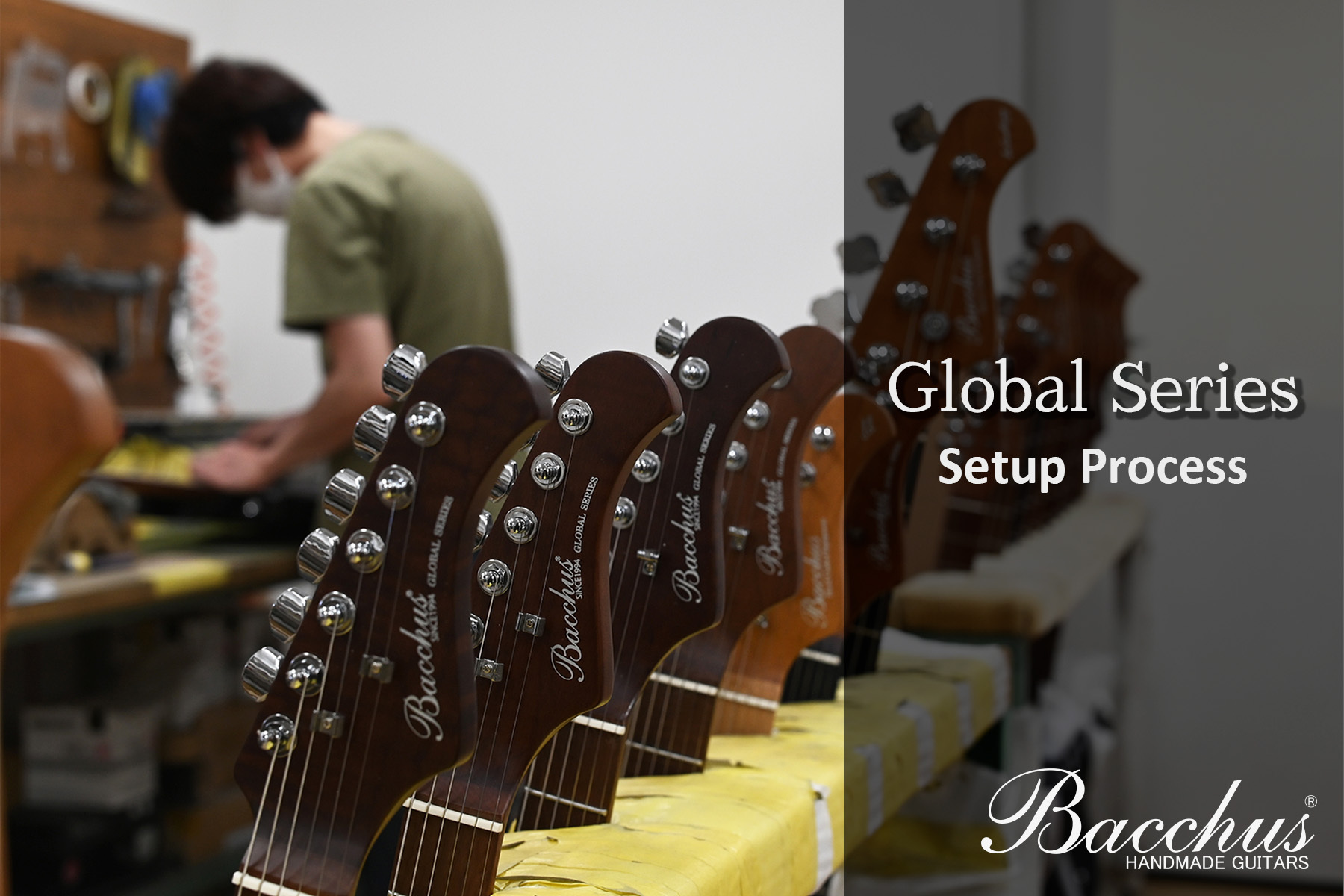
The Bacchus Global Series follows strict quality standards. Each unit is carefully inspected and set up in Japan before shipping.
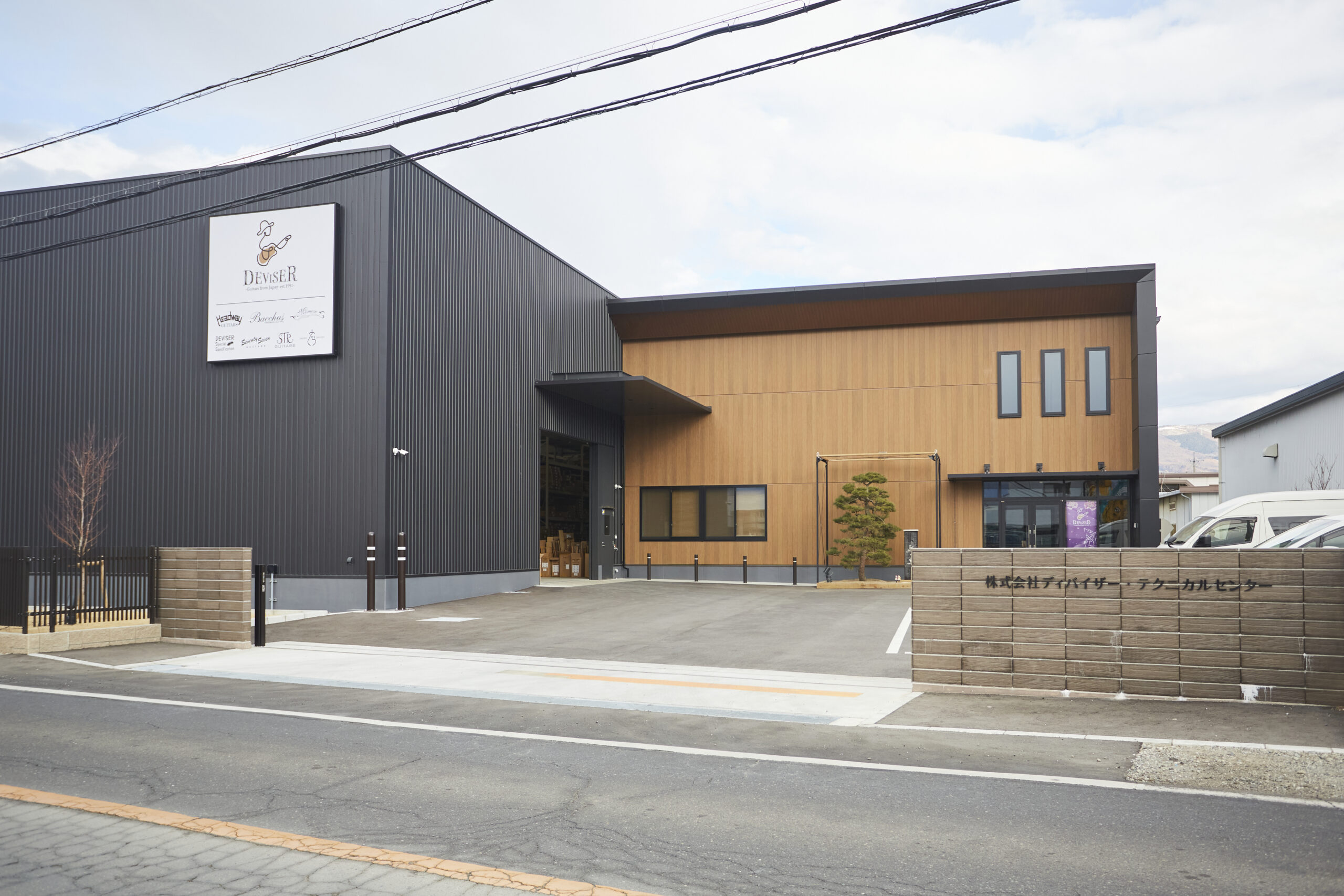
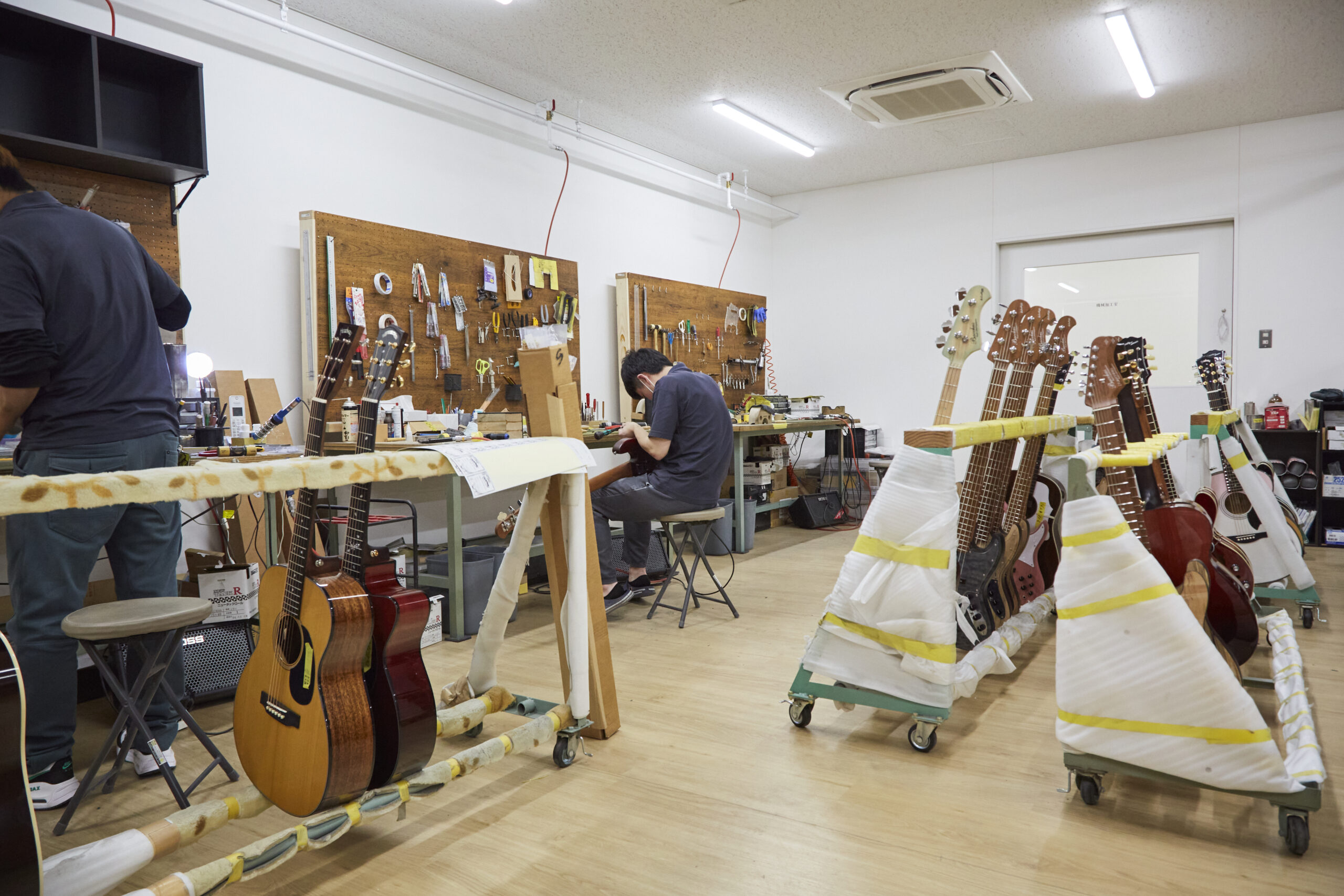
This process is handled by the skilled staff at the Deviser Technical Center, located next to our head office and the Aska factory. This page provides a detailed look at each step of the inspection and setup process.
Visual Inspection
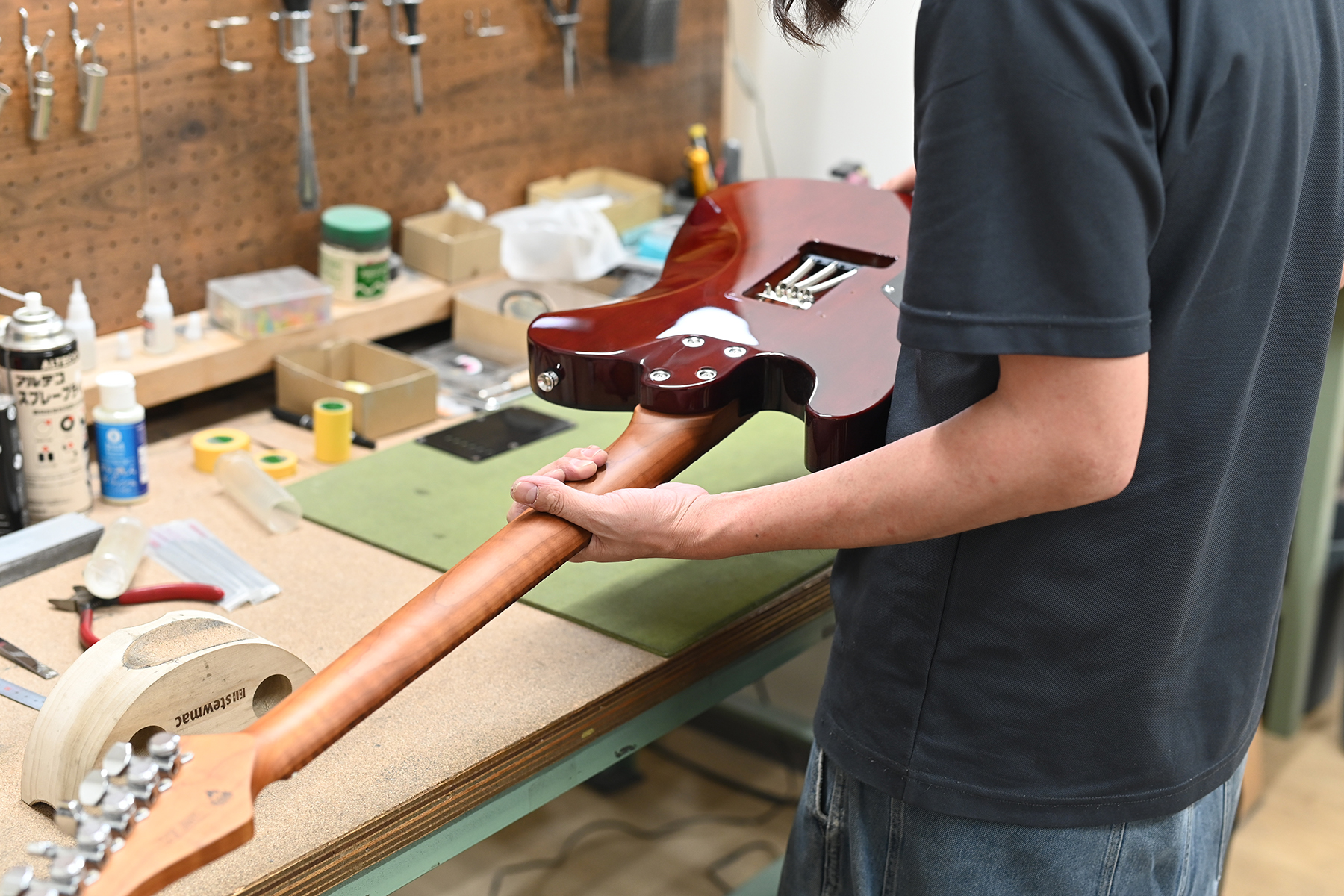
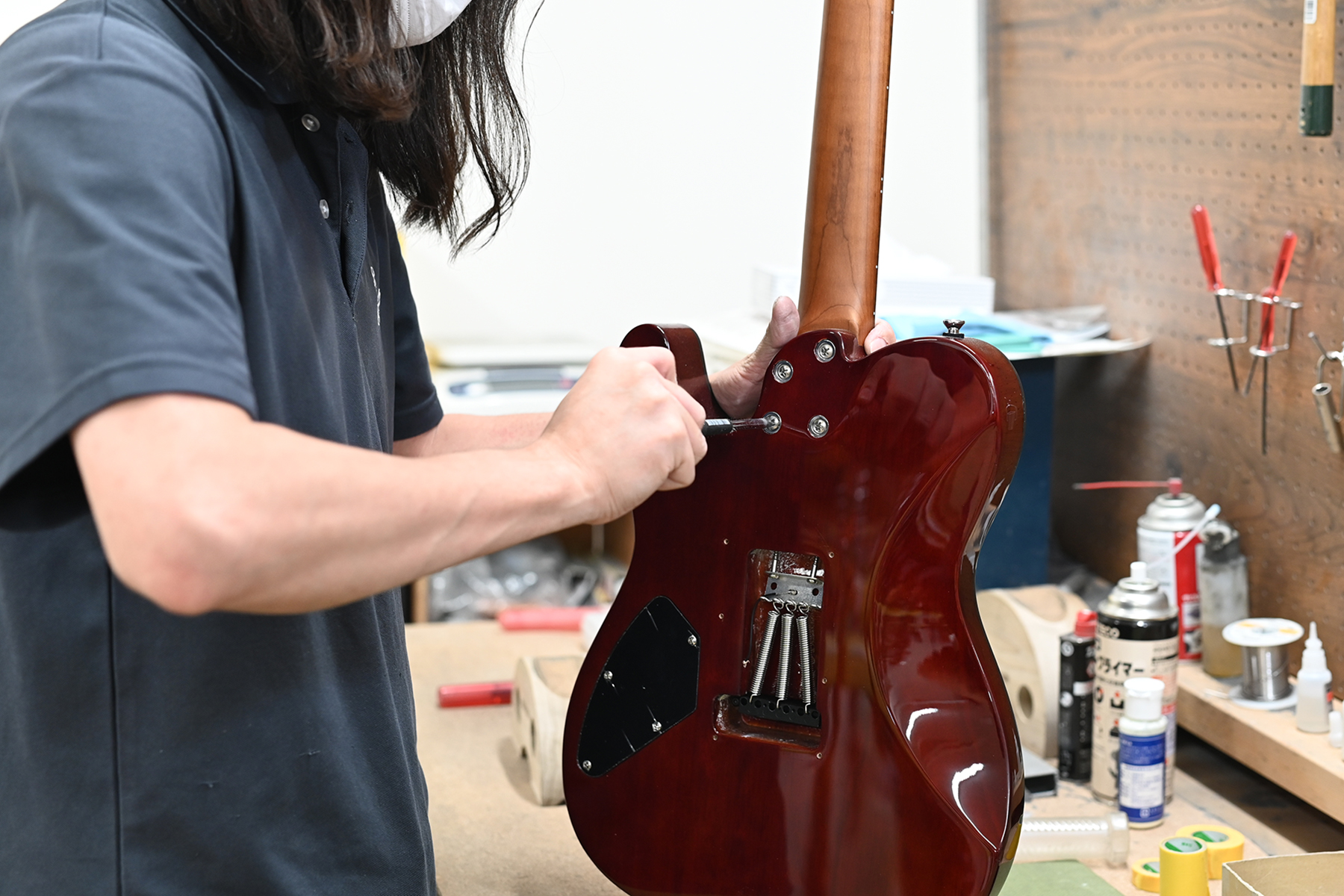
As the first step, we inspect the instrument for any scratches or dents, starting from the edge of the headstock to the surface of the body. We also check that all screws on every part are securely tightened.
Frets Polishing
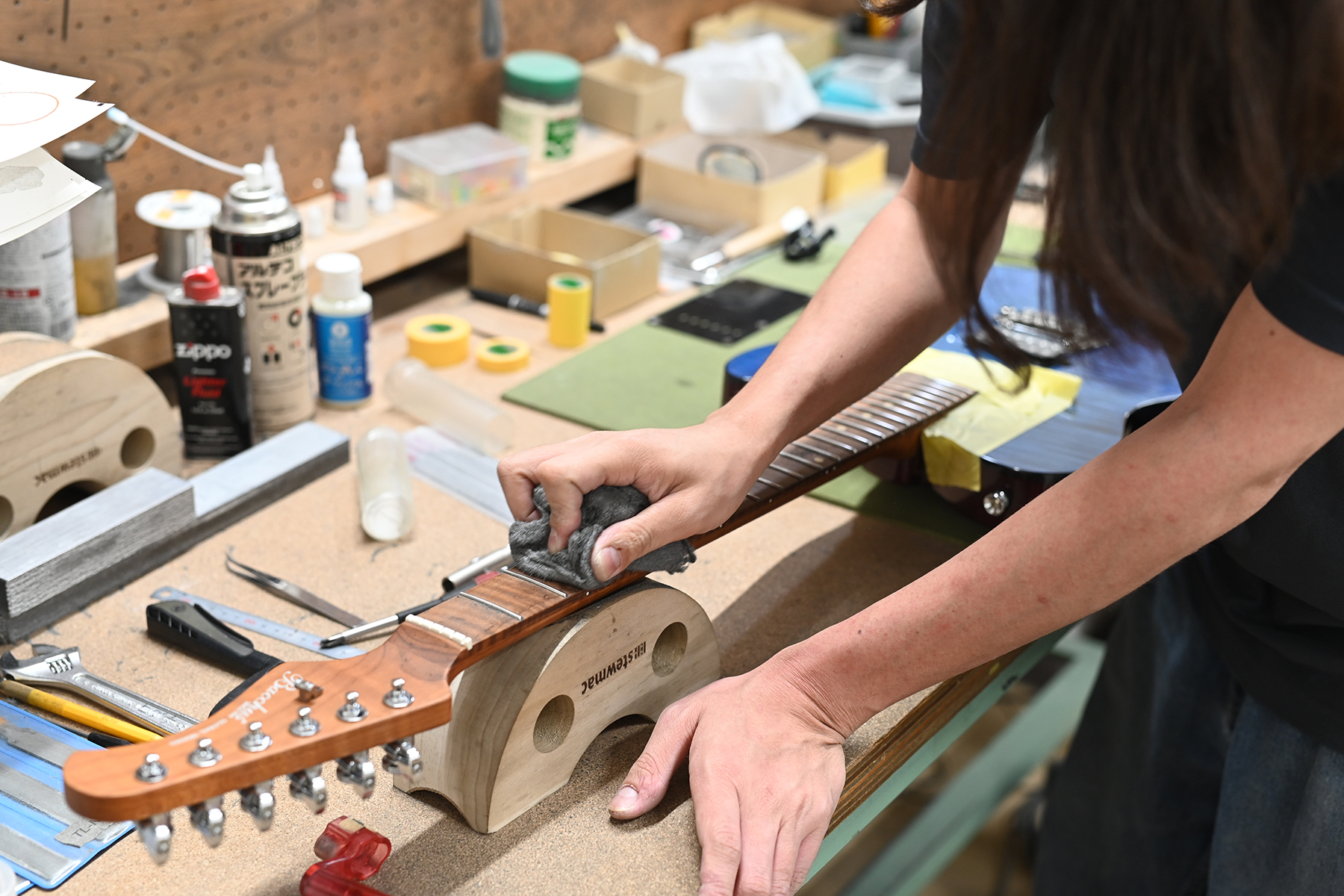
After removing the strings, the frets are polished with steel wool. This smooths the surface of the frets, which not only improves their appearance but also enhances playability when bending or sliding the strings. If the fret edges are rough or sharp, they are carefully rounded during this process.
Bridge Pre-Adjustment

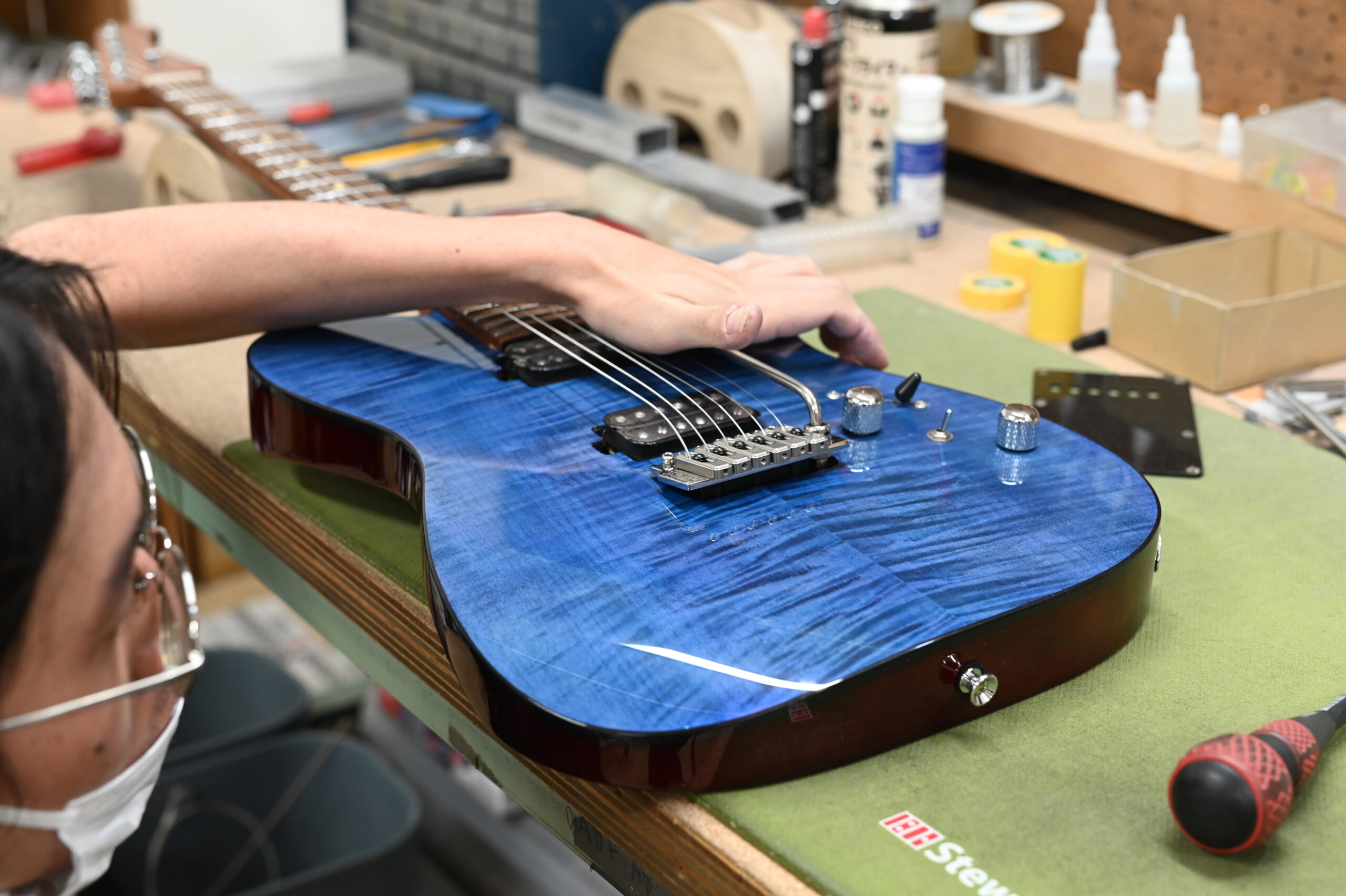
To prepare for octave tuning in the final step, the saddles are set in their proper positions. For models equipped with a tremolo bridge, the amount of float is also pre-adjusted.
Neck Relief Check
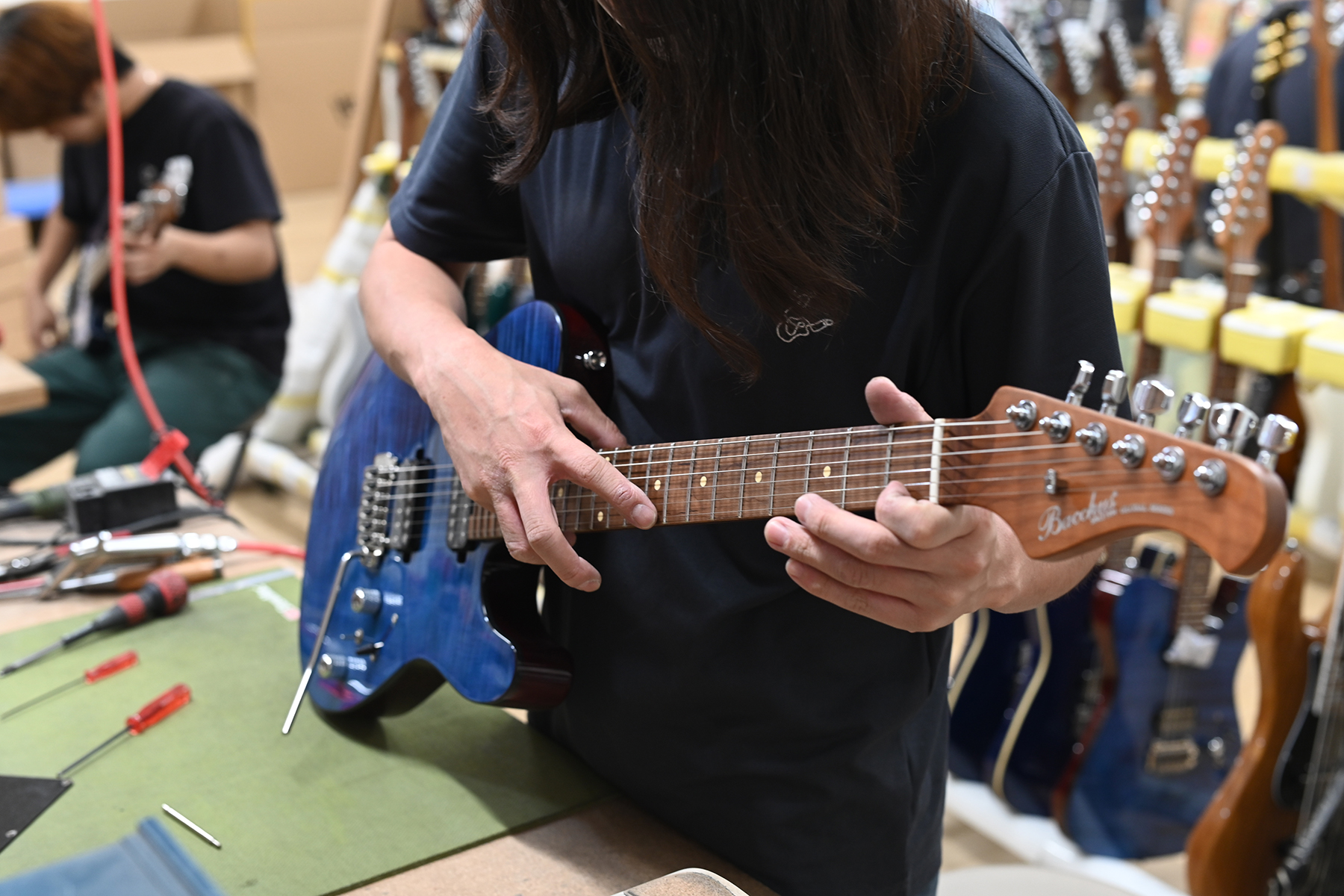
To bring the neck to our standard condition, completely flat or with a slight forward bend, we check the neck relief and adjust the truss rod as necessary.
Nut Slots Adjustment
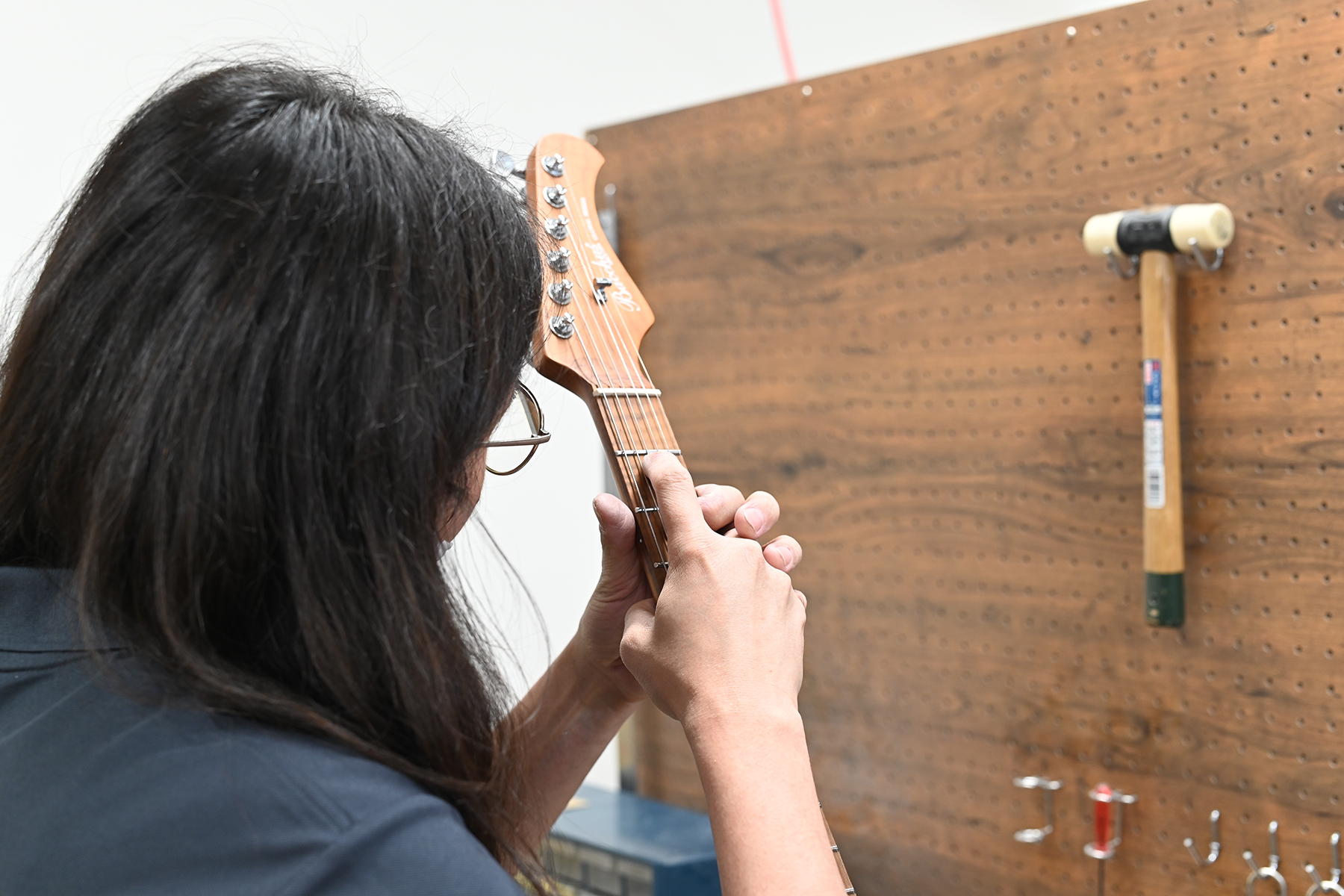
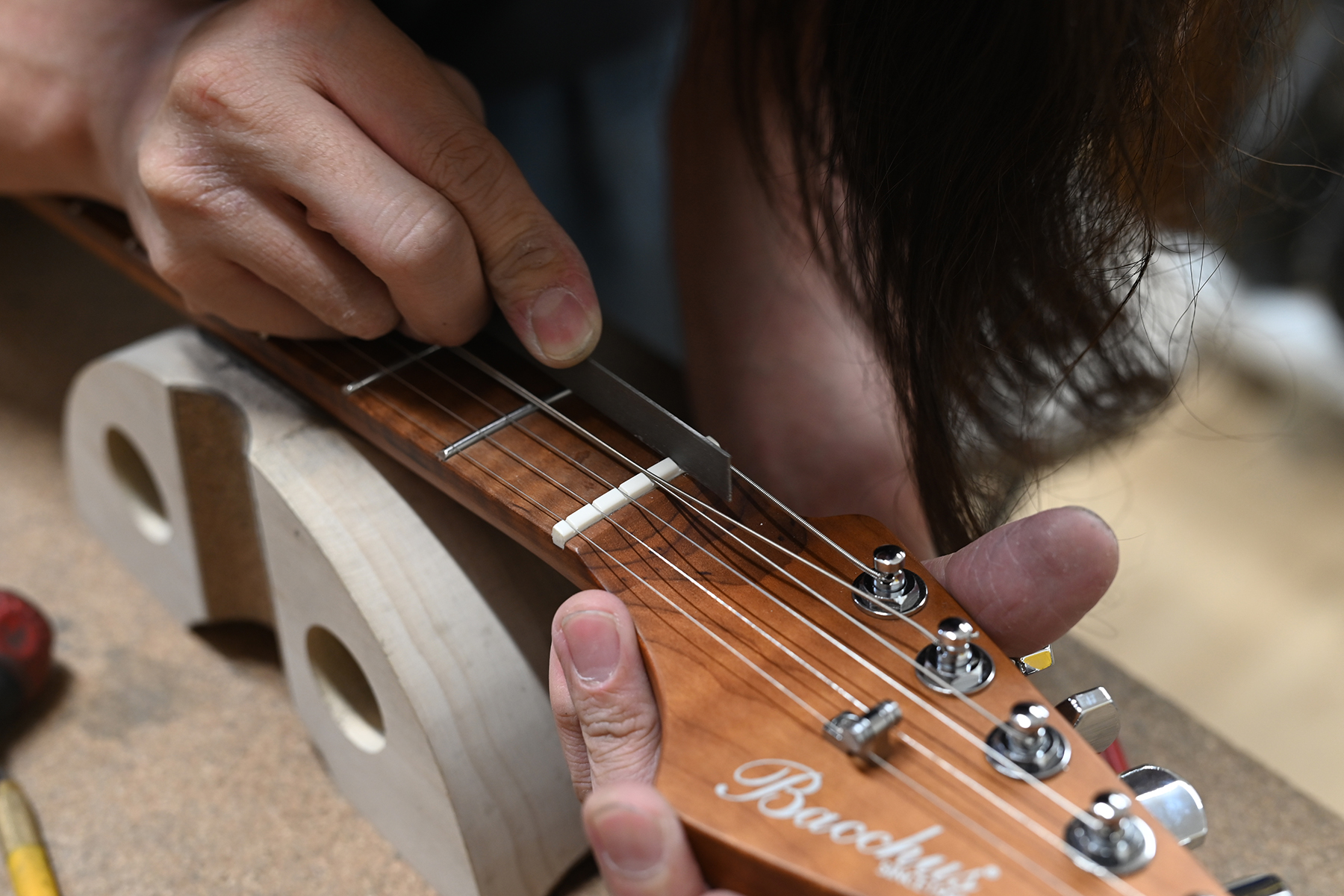
In this step, we check the height of the nut slots and adjust them as needed. Since the nut is in direct contact with the strings, this process must be done carefully and thoroughly.
Final Checks and Adjustments
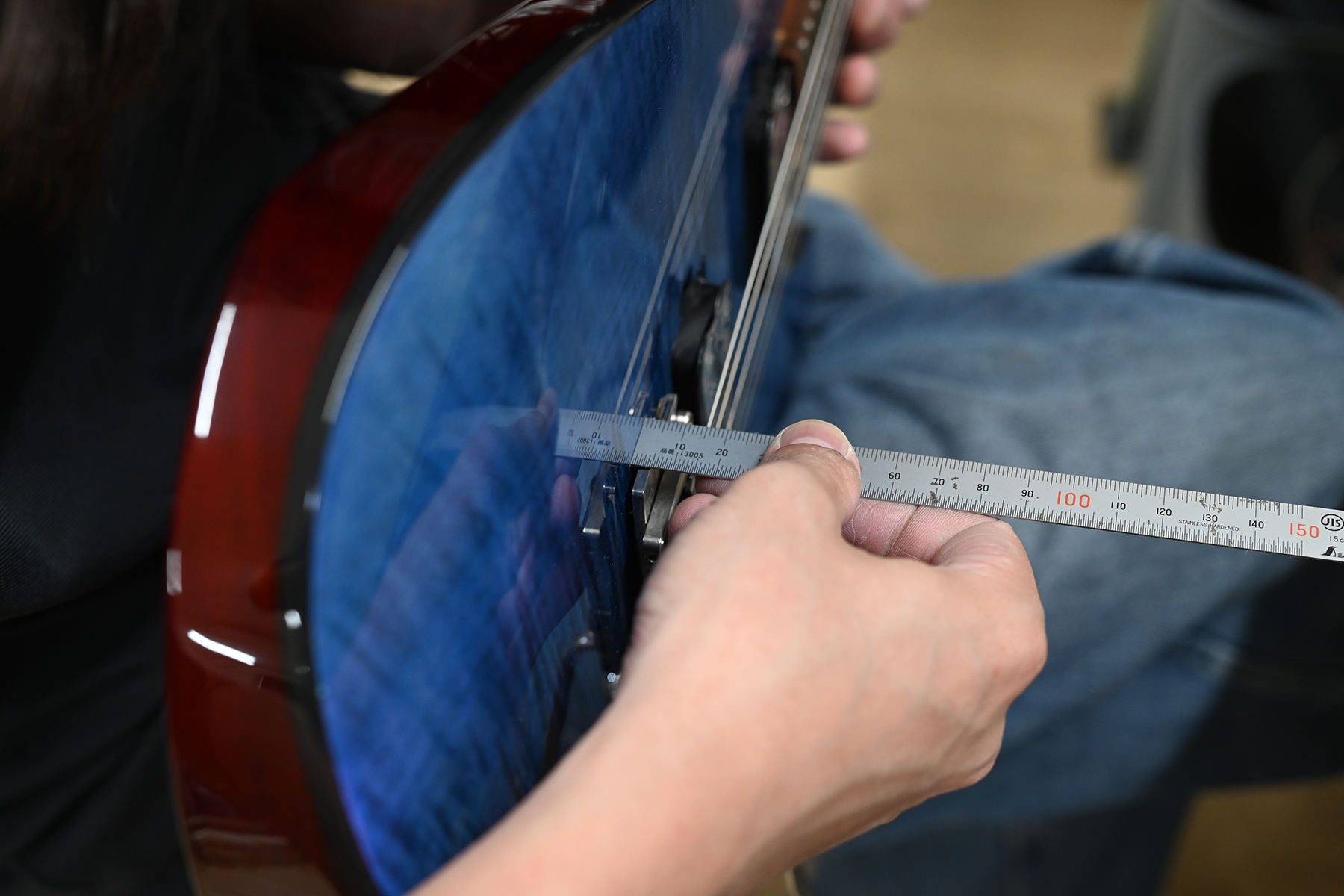
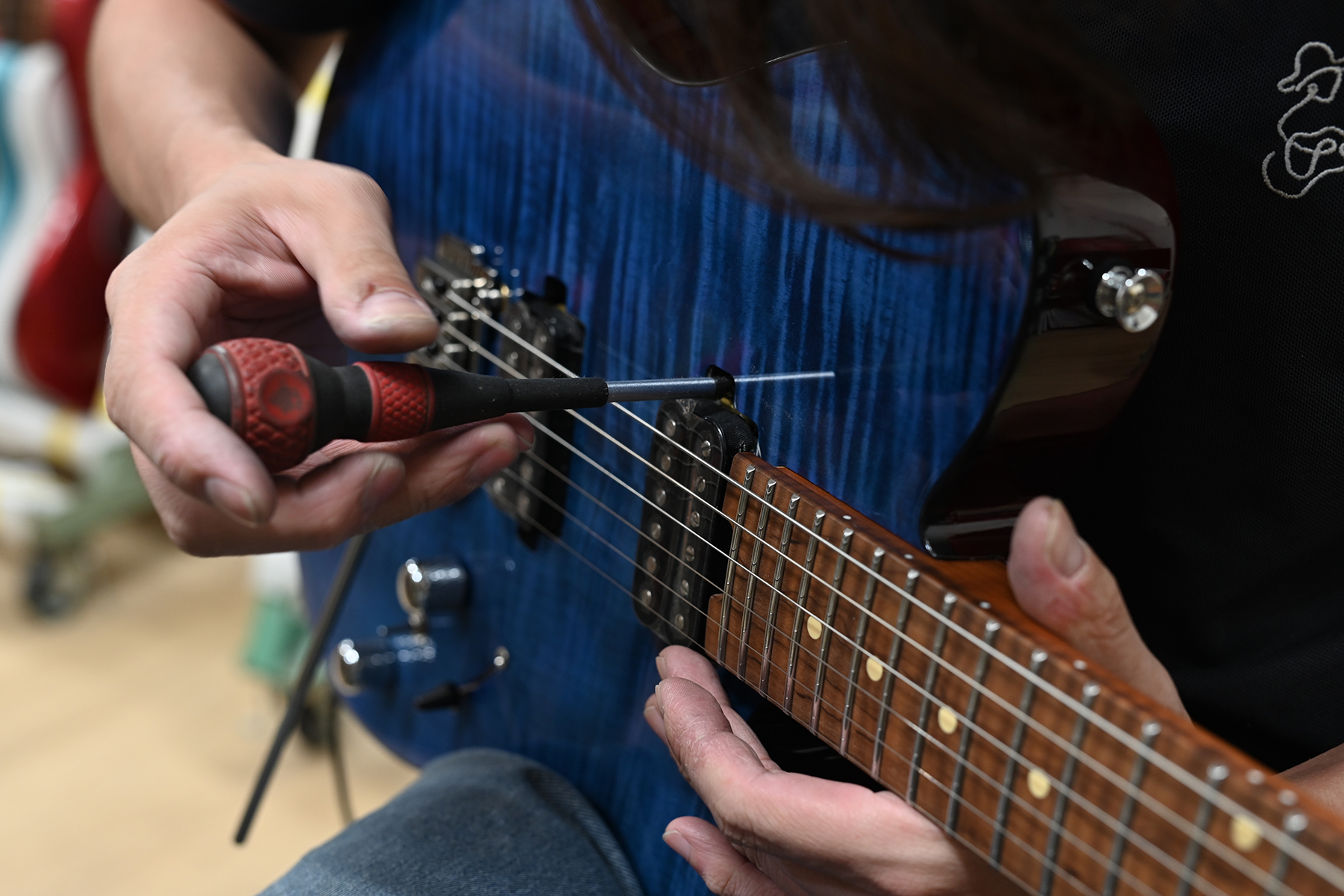
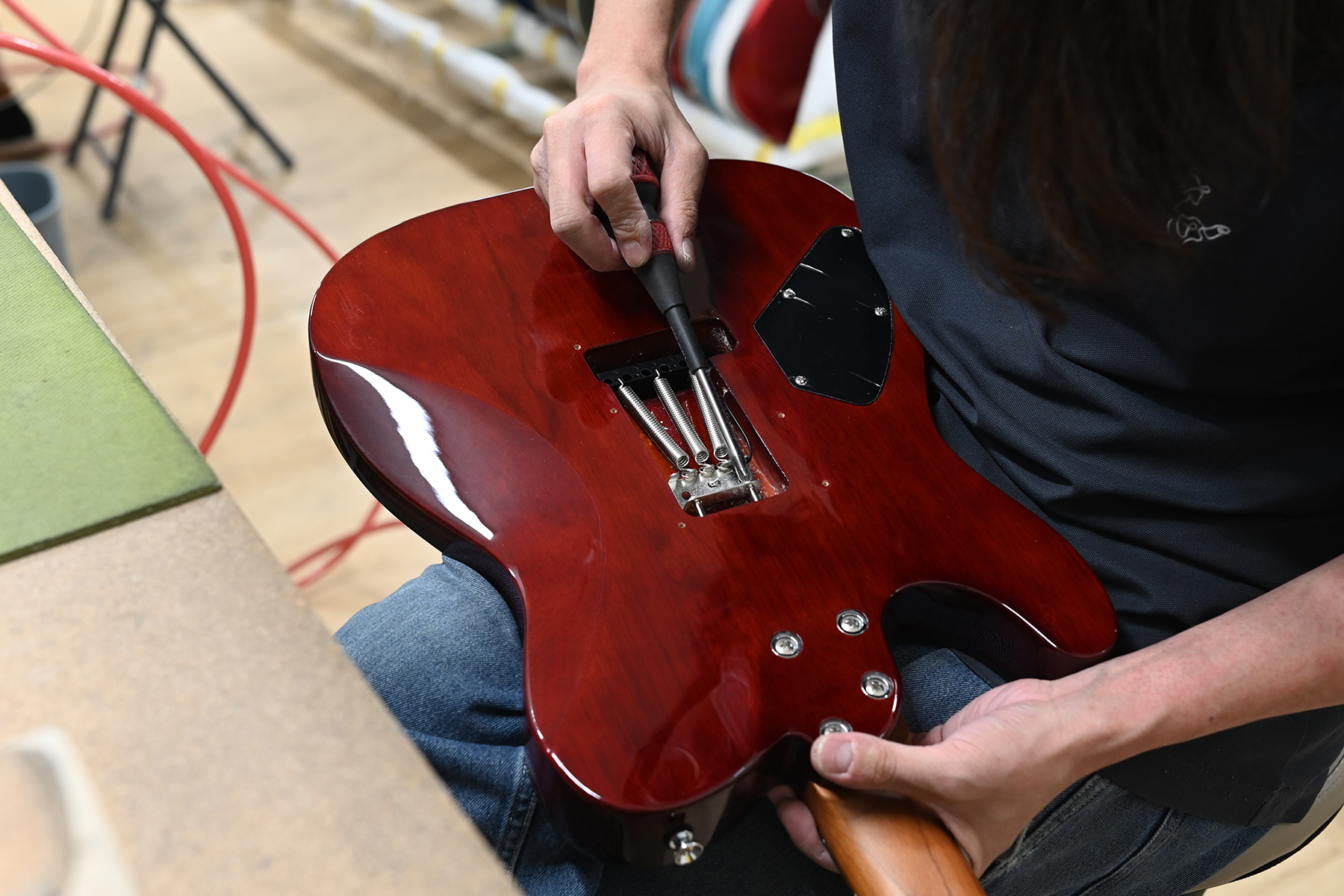
As the final step, we check the following points:
- Adjust the string action and tune the octave pitch
- Adjust the gap between the pickups and strings
- Check that each control is according to the original specs
- Ensure there is no string buzz on any fret
- Test the tremolo bridge and adjust the amount of float one more time
Cleaning before shipping
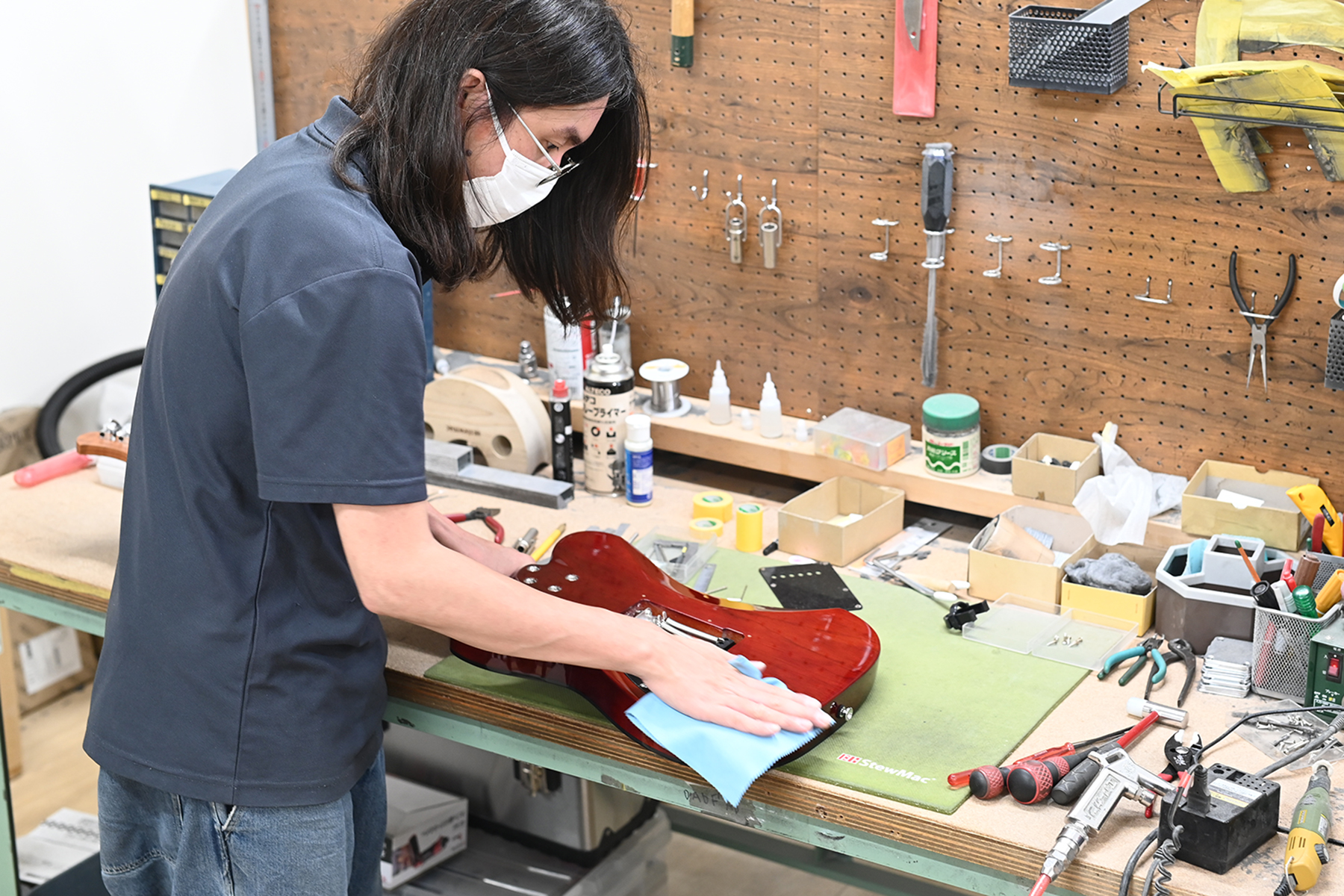
Finally, the guitar is cleaned before packing. If there are any scratches on the body, a buffing machine is used to remove them. The setup room is equipped with a variety of tools to handle different types of individual conditions.
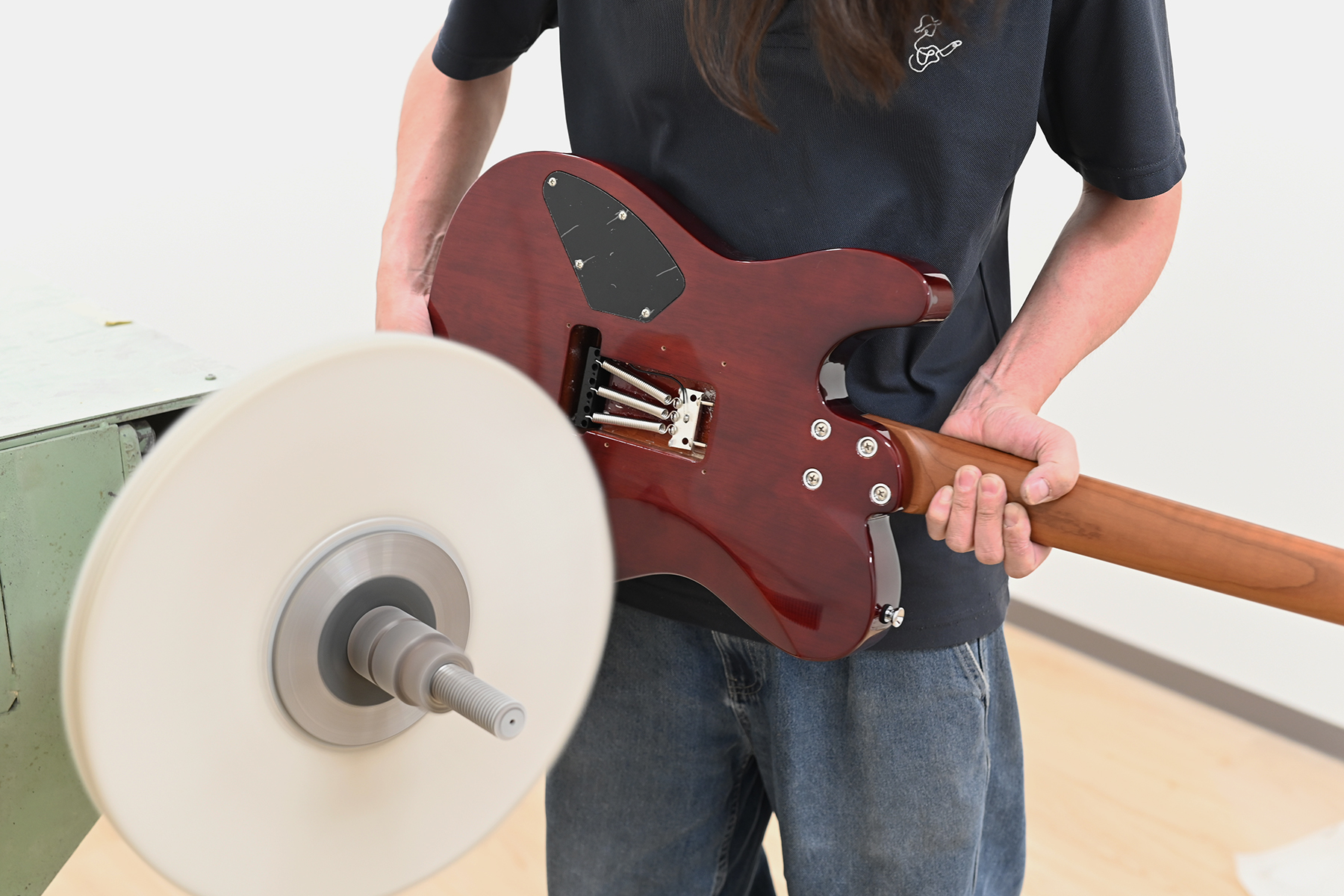
Official Seal
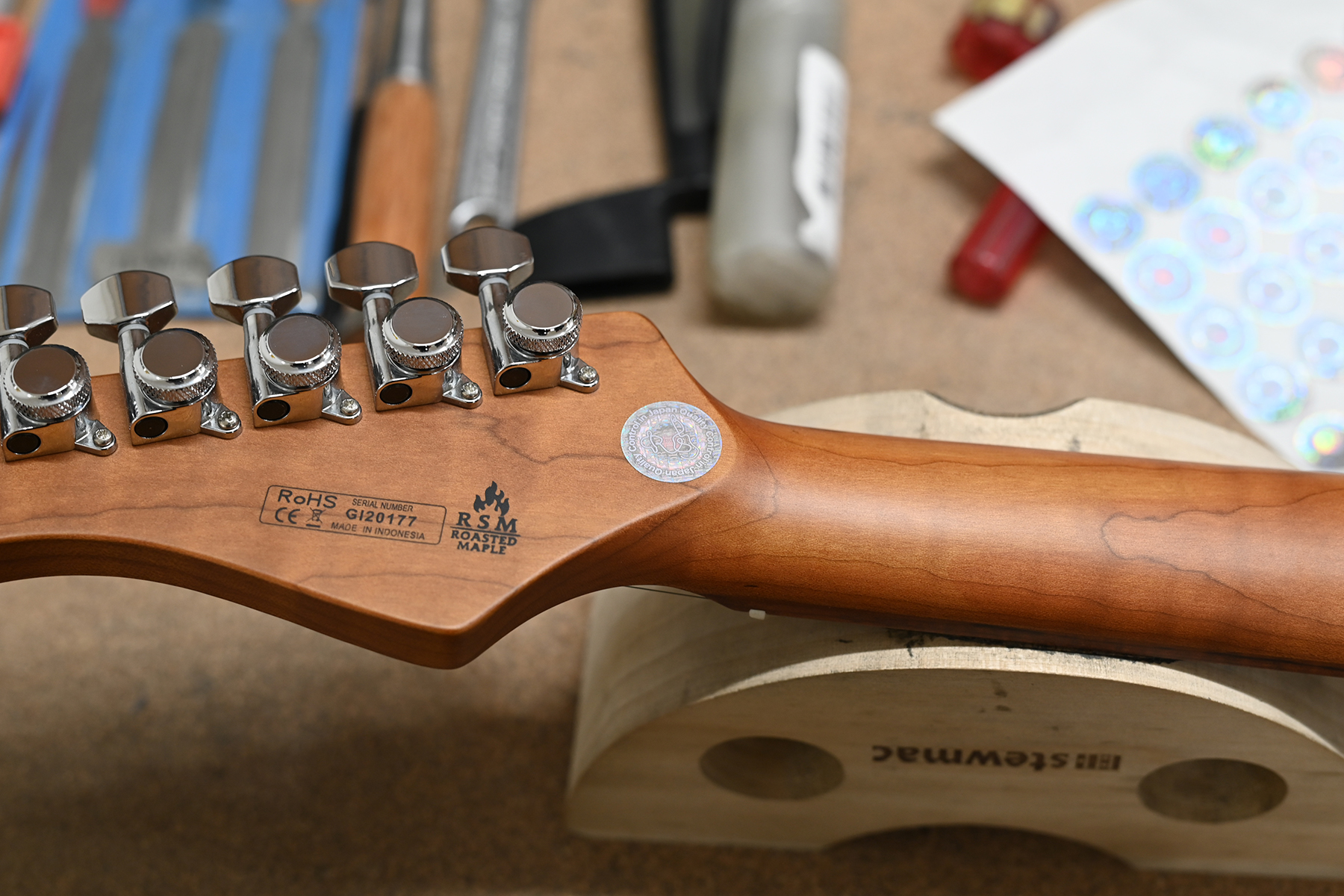
Once all processes are complete, the official seal is placed on the back of the neck as proof that the guitar has passed the QC process in Japan.
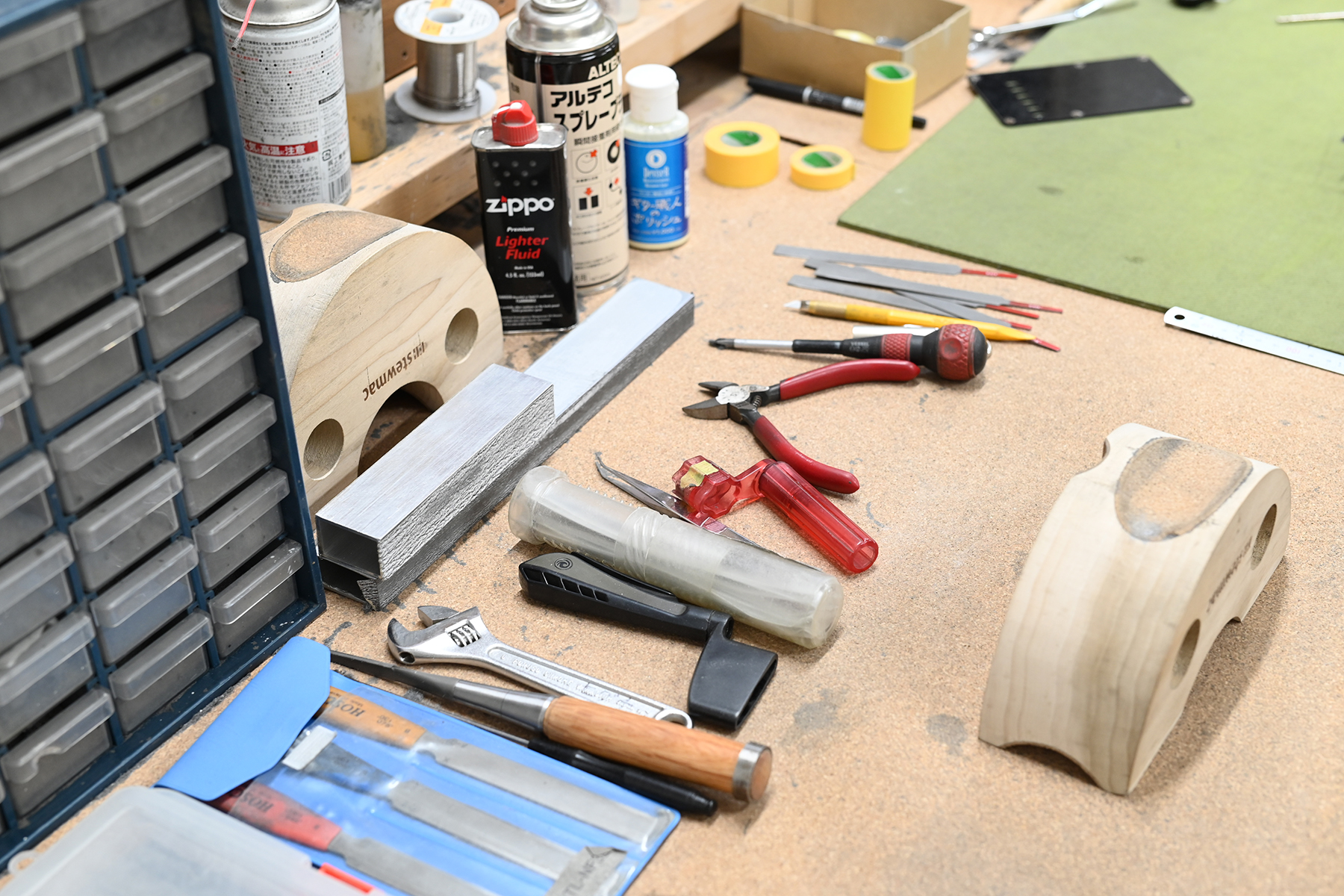
*Please note:
Since guitars are made of wood, the condition of the neck and frets may change after shipping, depending on storage conditions and humidity. Over time, regular use can also cause wear and affect the setup. That’s why regular maintenance is important. For example, changing strings is a good opportunity to check and adjust your guitar’s condition.


